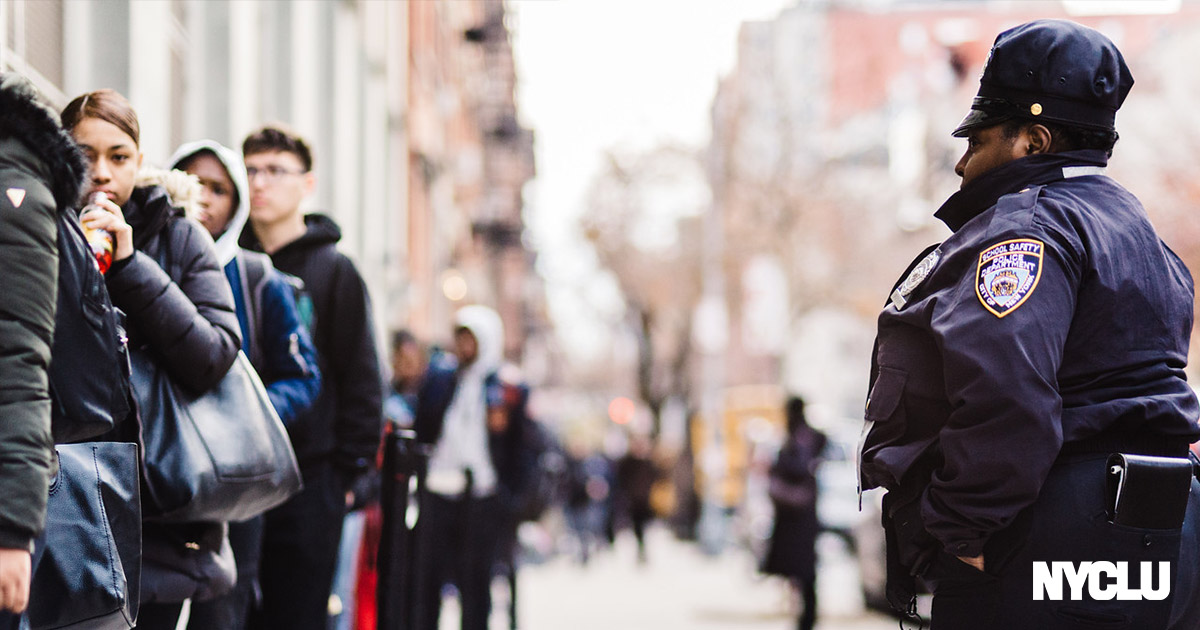Column: Constitutional Limits on Congressional Investigations Into Palestine-Israel Advocacy
Civil Liberties Union

Across New York state, we have no idea how many police are roaming the hallways of our schools. We have no sense of how many arrests are taking place on campuses and we have no clue what the full scope of policing in schools is.
Without this information, we are in the dark about how students’ lives are impacted by police. Communities can’t make informed decisions about what problems exist in their schools and how best to fix them. We also have no idea how many young people’s lives are ruined by the school-to-prison pipeline that funnels students into the criminal justice system, often beginning with minor misbehavior.
This longstanding problem is highlighted by a new report, “Cops and No Counselors: How the Lack of School Health Staff is Harming Students,” by the NYCLU and four other ACLU affiliates along with university researchers. The report, which is based on the most recent information available from the Civil Rights Data Collection (CRDC) survey by the US Department of Education, found that millions of students are in schools with law enforcement but no support staff, such as social workers, nurses, psychologists, and counselors.
But in New York, one of the biggest problems is not what the CRDC data reveals, but what is missing.
If you glance at the CRDC data from New York State, you might think that New York is doing well compared to other states. There are relatively low numbers of police in schools and arrests made compared to other parts of the country.
Without this information, we are in the dark about how students’ lives are impacted by police.
But these low numbers are at least in part due to the crucial fact that the New York City, the nation’s largest school district, failed to report critical statistics, leading to an incomplete picture of school policing in New York.
The 2015-2016 CRDC data showed that only 17 percent of schools in New York State have law enforcement officers. But this number is wrong. New York City did not report on the number of law enforcement officers in its schools, yet New York City schools are occupied by one of the largest police forces in the country. The NYPD School Safety Division employs approximately 5,090 school safety officers and 113 armed police .
The number of police isn’t the only information missing from the CRDC report – New York City did not report on school-based arrests in the district. But we know through public reporting by the NYPD that there were at least 952 arrests of students in schools that year.
It’s theoretically possible that New York City is the only place in the state that is incorrectly reporting these stats, but it’s much more likely that it is just the only place we know is doing so. We can check New York City’s veracity only because of the Student Safety Act, a local law that requires transparency around school arrests and suspensions.
It is crucial that New York school districts report accurate information so that communities have a clearer idea of how their schools are doing and how police are affecting students’ lives. Local governments across New York should adopt legislation similar to the Student Safety Act to provide more transparency around law enforcement activity in schools.
And New York State should require all districts to publicly report the numbers of law enforcement, security guards, school arrests, and referrals to law enforcement. This sort of data transparency would give families important information on their school districts, and sunshine is one of the best ways to hold districts and law enforcement agencies accountable.
New York City’s failure or refusal to report accurate numbers to the US DOE provides a concrete example of the importance of data transparency. Since the enactment of the Student Safety Act in 2015, suspensions and arrests in schools are trending downward and schools are safer. The city’s public schools are very far from perfect. There are still too many arrests and suspensions for childish behavior and the racial disparities around who suffers these harsh punishments are extreme.
But we now have more of the information we need to hold public officials accountable. The same should be true in the rest of the state.